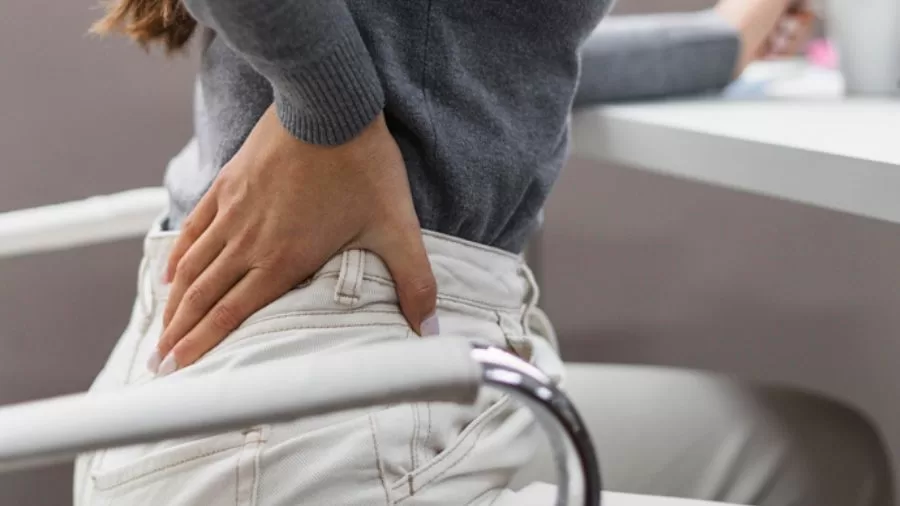Health
Hip Osteoarthritis Myths Debunked: Separating Fact from Fiction

Every year, millions of adults over the age of 45 are affected by hip osteoarthritis worldwide, yet reliable and straightforward information about the condition can be surprisingly hard to find, especially if you don’t know where to look. Hordes of myths surrounding the condition continue to plague the internet. For people with a confirmed diagnosis or those noticing the early symptoms, it can be a hard task to distinguish between what’s real and what isn’t. So, keeping that as the objective, let us take a closer look at popular myths about hip osteoarthritis (OA) and separate the facts from fiction.
Myth 1: Arthritis only affects the elderly
We often associate osteoarthritis with old age, a kind of wear and tear of our body’s machinations that develops over time. The reality, however, is that age is just one of the many contributing factors at play here. You see, our genetic makeup, joint alignment, muscle imbalances, and even hormonal changes can all influence when and how OA develops. Not only that, but many people begin experiencing symptoms in their 40s, particularly those with active jobs, past joint injuries, or inherited skeletal variations, that place added stress on the hip joint.
The critical takeaway here is that you must not wait to fit some age bracket to get checked for conditions like hip osteoarthritis. After all, early symptoms like groin discomfort, stiffness when sitting, or a reduction in full range of motion often emerge before imaging reveals significant joint damage. If you find yourself facing any of these issues at present, getting yourself checked by a hip specialist in London at the earliest can help you get ahead of the problem and seek timely treatment.
Myth 2: Exercise will damage arthritic hips further
It’s an instinctual thing to get some rest when inflicted with pain of any kind. Joint pain, especially the kind that comes from hip OA, is different, given how little movement can be just as harmful as too much of it. Engaging in heavy exercises is a surefire way of making things worse for yourself. Still, regular, low-impact physical activity not only helps strengthen the muscles that surround your hip but also improves circulation and controls inflammation within the joint space.
It may hurt a bit when you start, but engaging in movement routines tailored to your mobility level can be just as effective as taking a painkiller to dull the pain. These include water aerobics, walking programmes, or carefully supervised resistance exercises. If that sounds a bit much, even simple habits like standing up more often, stretching the hip capsule or going out for a short walk every day can improve your long-term function when practised consistently.
Myth 3: Osteoarthritis is an inevitable part of ageing
The simple truth of the matter is this: not every adult gets osteoarthritis with age. Yes, a lot of people get diagnosed with it. Still, many adults also remain symptom-free well into older ages, especially those who maintain joint health through a healthy lifestyle that incorporates strength training, daily movement, and a healthy weight. More than ageing, systemic inflammation, linked to metabolic conditions like type 2 diabetes or high cholesterol, has been recognised as a significant risk factor for OA. These conditions, after all, can weaken cartilage and bone through chemical processes that operate independently of physical stress on the joint. Your dietary choices, hormonal regulation, and even stress levels contribute to the body’s inflammatory environment, which can either support joint longevity or accelerate degeneration.
Myth 4: There’s a cure for osteoarthritis
This is a half-truth that people, without sufficient research, often utter in conversations surrounding the issue. While osteoarthritis indeed does not have a cure at present, that does not equate to treatment options being non-existent.. For mild to moderate cases, physiotherapy, strength work, and temporary use of anti-inflammatory medications are typically enough to manage symptoms effectively. In the case of flare-ups, joint injections are available for temporary relief. Let’s not forget that newer biological approaches, such as platelet-rich plasma (PRP) or stem-cell-based therapies, are being actively explored to help with the problem. What works best for someone tends to vary depending on medical history, activity level, age, and overall skeletal structure. A bespoke treatment approach, in place of a one-size-fits-all plan, ensures the treatment is effective and meets with specific challenges each patient faces.
Myth 5: Surgery is the inevitable outcome
The short answer is that surgery is not the default solution for osteoarthritis at all. In fact, many people manage the condition for years, even decades, without ever needing a joint replacement. Procedures like hip replacement are options for individuals who have exhausted all conservative approaches and whose loss of function has reached a critical stage. What’s also worth noting is that these days, surgical procedures are not as invasive as people claim them to be. Minimally invasive procedures can sometimes delay or prevent the need for a complete replacement by correcting structural problems in the joint.
Another myth tied to this that’s worth a shout is how people often overestimate how quickly the surgery will “cure” the problem. The simple fact is that your movement can take a bit of time to get back to normal, and post-operative recovery, along with ongoing muscle work, remain essential components of success. For this reason, many practitioners prioritise strengthening, weight-bearing management, and pain tracking before considering surgical approaches.
The standard practices for managing osteoarthritis
Here’s a common thread that ties all these myths together: Management of hip osteoarthritis is most effective when multiple factors are addressed together. These include:
- Regular movement and low-impact exercises every day can reduce stiffness and keep the joints functioning like a well-oiled machine.
- Strength training to strengthen your muscles and support the hip.
- Eating diets high in anti-inflammatory foods like oily fish, leafy greens, and whole grains can reduce systemic inflammation and the chances of diabetes and high cholesterol.
- Maintaining good sleep hygiene for recovery, repair, and pain modulation.
- Managing your weight to prevent overloading the hip joint.
How can you find the latest information on Osteoarthritis?
With hip osteoarthritis, timely information can influence how you take in the diagnosis and subsequently manage it. This condition can manifest itself differently for every individual. Myths about age, exercise, surgery, and recovery often paint an incomplete and sometimes discouraging picture, with the reality being far more dynamic than what’s recognised.
By replacing assumptions with evidence and personalised strategies, people with hip OA can regain control over their lives with better function and a clear plan for maintaining mobility in the long term.




















































